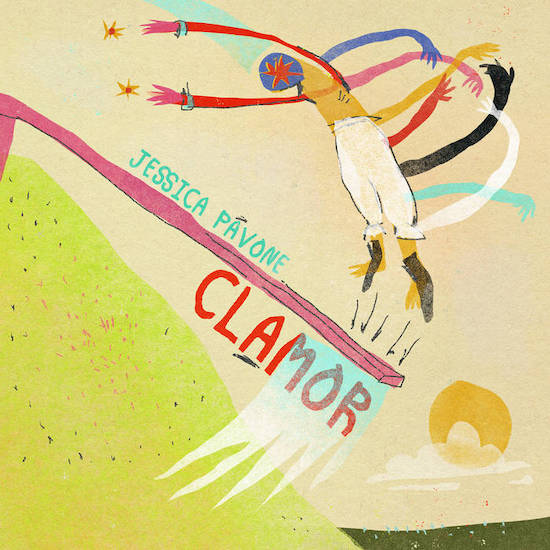Jessica Pavone’s Clamor evolved around 2022, written for a six-person ensemble and bassoon soloist, featuring four movements; ‘Neolttwigi’, ‘Nu Shu (part 1)’, ‘Nu Shu (part 2)’, and ‘Bloom’, each named for an invention that women created to subvert rules restricting their freedoms. It builds on some foundation stones from 2021’s Lull, which highlighted different singular styles, while still serving the ensemble. Thematically, and philosophically, there is a centring of “women’s work” in these four compositions, an exploration of how we value things, how we create, and how we survive.
The ensemble for Clamor comprises violinists Aimée Niemann and Charlote Munn-Wood, violists Abby Swidler and Pavone herself, cellist Mariel Roberts, double bassist Shayna Dulberger, and bassoonist Katherine Young, a player who Pavone has a long-standing shorthand with. In one sense all the pieces mirror the principle of the ‘Neolttwigi’, or the 17th-century see-saw that Pavone stumbled upon during her research. In this period, Korean women invented the standing see-saw to help them see beyond the confines of the properties they lived in, creating another world out of confinement.
‘Neolttwigi’ has a sway and a swing to it, its rhythm mirroring the see-saw, there is a sense of the ominous, but then the piece starts to sound like it is glowing, as its radiance deepens and unfurls over time. It continually refers to discord, but resolves; cinematic in scope, and triumphant in execution, it folds out in such an interesting way, at times sounding like white noise, or an old radio broadcast.
‘Nu Shu (part 1)’ begins as a kind of warning call, bringing to mind the sound of a submarine, conjuring elements of electronic music, and shows just how creatively the bassoon can be used. Folding in elements of industrial, with nods to the natural world, and the sound of breaths which suggests the physical, as well as emotional labour of this endeavour. ‘Nu Shu (part 2)’ continues the journey of this secret language that Chinese women evolved, a separate written language, with ‘Nu Shu’ roughly translating to “female writing”. There is an eerie skittering quality that weaves right across this piece, producing a tension, a compelling push and pull. Both of these movements emerged from Young’s solo language on her instrument, wonderfully harnessing the bassoon and its low end, and in the context of the ensemble yields a transcendent beauty.
‘Bloom’ opens in rootedness, taking its cue from Pavone’s research into Amelia Bloomer who created the bloomer during the Victorian dress reform. It opens with a melody that sounds like an old folk song, the air so sad and true which opens out to somewhere more optimistic, and yet there is still a kind of leavening, with drones that bring us back to a familiar sense of tension, it is an exercise in pure possibility.
Clamor conveys the sense that while the old warring is still around, it will not be all-conquering. It is a cohesive, democratic, exciting and sensual body of work, with Pavone’s approach acting as a different kind of metronome, one that is about playing with time, inviting the players to take us somewhere more naturally emotional. It trades on a trust in the players’ talent and experience, trusting each to their own intuition, harnessing an almost Emersonian sense of the individual, yet still achieving a potent, collective unity.


